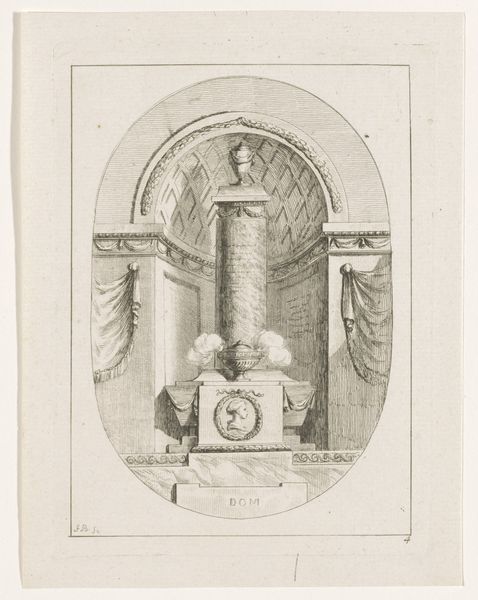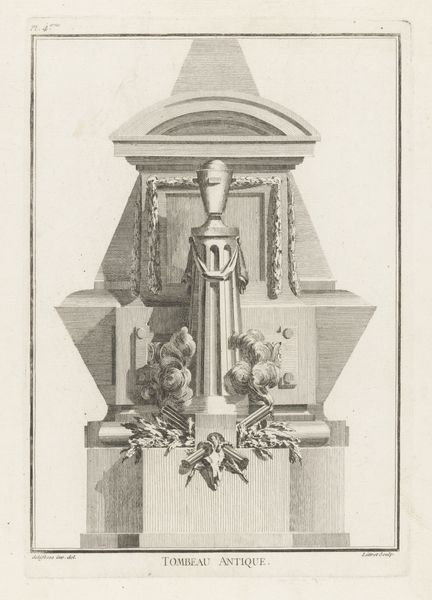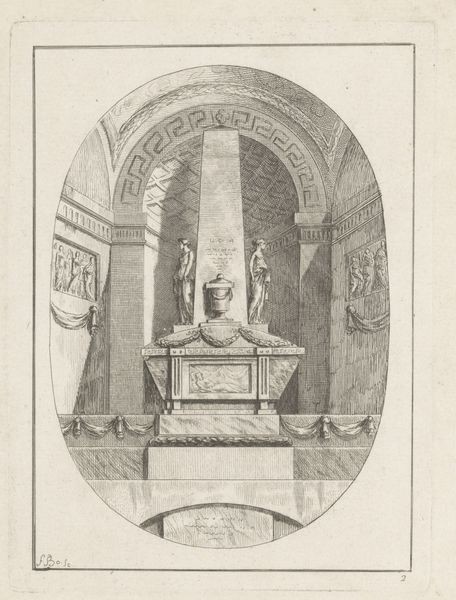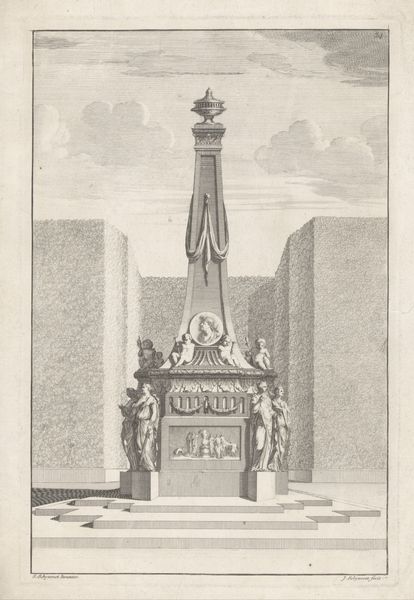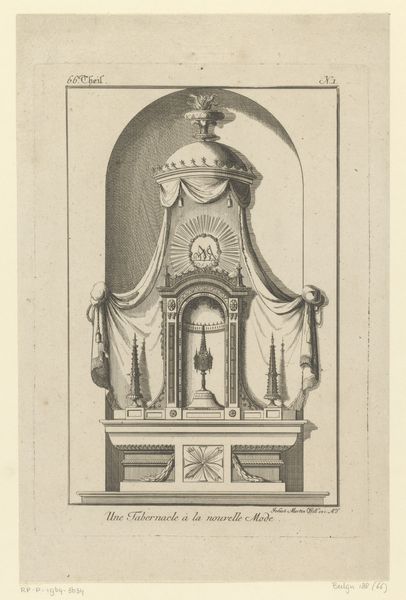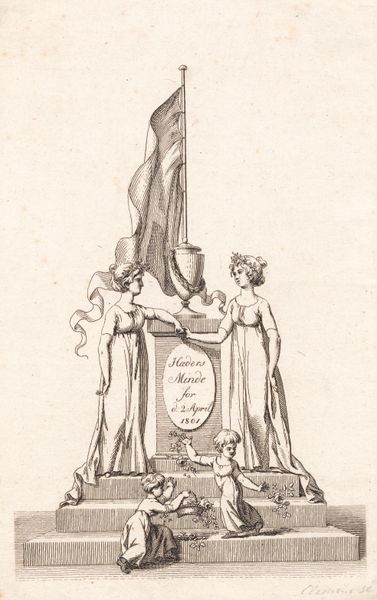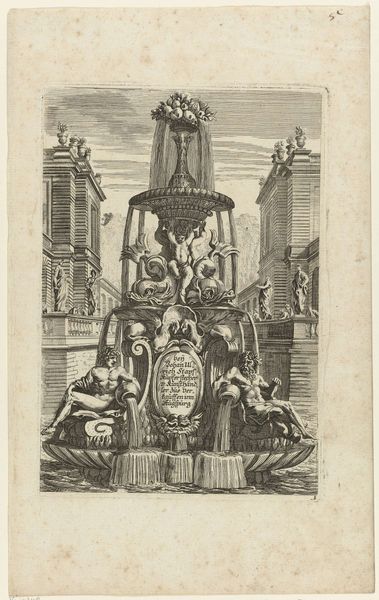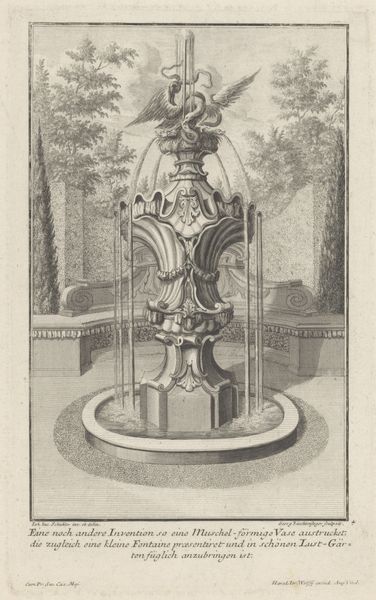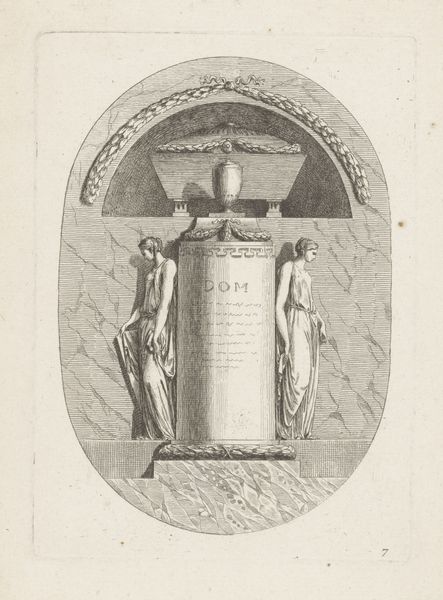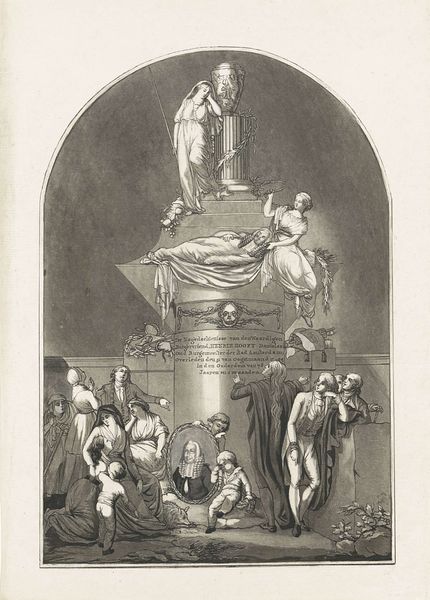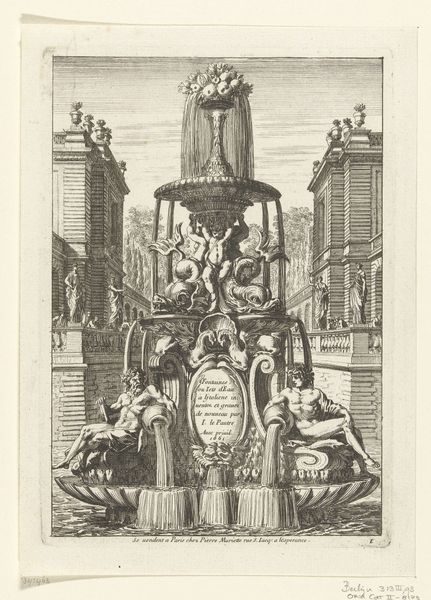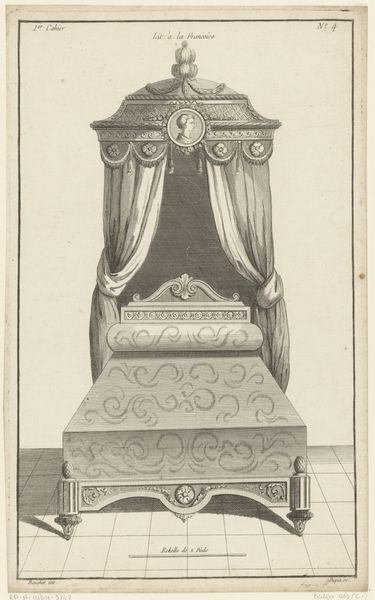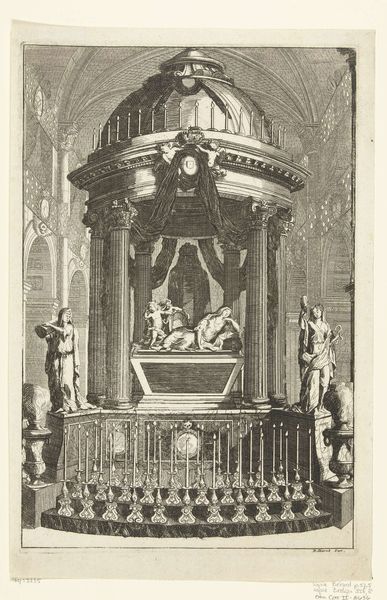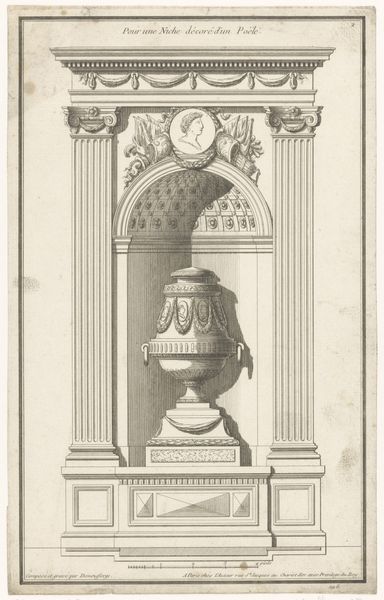
print, engraving, architecture
#
neoclacissism
# print
#
geometric
#
line
#
history-painting
#
engraving
#
architecture
#
building
Dimensions: height 181 mm, width 137 mm
Copyright: Rijks Museum: Open Domain
Curator: Looking at this print, "Tombe met obelisk en treurende figuren," created between 1755 and 1782 by Juste Nathan Boucher, one gets a real sense of the Neoclassical obsession with death and remembrance, wouldn’t you say? Editor: Absolutely. It's immediately mournful, even melodramatic, isn’t it? The precision of the engraving, the geometric rigidity of the obelisk, juxtaposed with those wispy plumes…it feels performative in its grief, somehow. Curator: Performative grief was a feature of that era. You have to remember the context: the Enlightenment, the rise of secularism. Grief became almost a civic duty, a way to express sentiment in the public sphere. Editor: I see that. I'm struck by how theatrical it feels. It's not just grief; it's grief meticulously staged. The idealized figures weeping, the urn placed so deliberately… it feels less like a private mourning and more like a carefully crafted display of sorrow. Almost a… competition in woe? Curator: Maybe. The engraver clearly borrowed visual cues from ancient Roman funerary monuments, creating a link to the past. These images circulated widely through print, shaping how people viewed and expressed bereavement. The architecture, rendered with precise lines, gives that stoic, classical vibe, doesn't it? A sort of timeless permanence to the grief on display? Editor: Indeed. And that cartouche… the 'DOM' inscription. "Deo optimo maximo"—To the greatest, the best God." But does it offer genuine solace, or does it simply reinforce societal expectations of how mourning 'should' look? Is it speaking from the heart or echoing the prevailing cultural script? I feel the weight of obligation, not the lightness of solace. Curator: That’s an insightful point. Perhaps this print functions as a reminder of mortality, inviting reflection on our place within the social order, a quiet demonstration. It makes you ponder, does art comfort the bereaved or does it mold their mourning? Editor: Food for thought! The scene somehow whispers, “Remember death but always aesthetically, please.” I suppose if anything it makes the thought of death a bit easier to cope with. Curator: A very good and poignant conclusion to such an artistic discussion, I must admit.
Comments
No comments
Be the first to comment and join the conversation on the ultimate creative platform.
